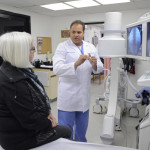KillMigraine treats various types of primary headaches as well as neurological conditions and disorders:
Migraine Headache
The Migraine Headache ranks second in the most common type of headache. Migraines are the most common underlying cause of recurring, disabling chronic daily headaches. Migraine pain can be felt in the face or neck. Symptoms of migraine headache include moderate to severe pain, sensitivity to light, noises or odors, blurred vision, nausea or vomiting, stomach upset, abdominal pain, loss of appetite, sensations of warm or cold, paleness, fatigue, dizziness, and can shift from one side to the other or encompass the whole head. Migraines are about three times more common in women than in men and affect more than 12 percent of the U.S. adult population.
Tension Headache
Tension Headaches are the most common type of Primary Headache, characterized by pain that wraps around the head and causing pressure. These headaches are commonly caused by stress, as well as noises and bright lights. Most people experiencing Tension Headaches will notice increasing intensity with time as well as pain originating in the back of the head (Occipital region), moving to the front of the head. Other notable causes include interrupted sleep cycles and depression.
Cluster Headache
The Cluster Headache is often received in a cyclical fashion. Affecting men more frequently than women, these headaches will come in waves and display increasing intensity with each “cluster.” Pain is often felt behind the eyes and sinuses.
New Daily Persistent Headache (NDPH)
These headaches are chronic with a daily onset, and unremitting in nature. They usually manifest themselves at areas on both sides of the head (bilateral) and may be unremitting from onset or rapidly build up to continuous unremitting pain.
Neuralgia
Neuralgia is a sharp, irregular pain that follows the path of an irritated or damaged nerve in the head or face. KillMigraine treats trigeminal (one-sided shooting facial pain, particularly the forehead, cheek or lower jaw), occipital (shooting pain located in the back and top of the head, particularly the scalp, although pain can radiate toward one eye), and supraorbital (pain localized to the lower or upper forehead and sometimes the scalp) neuralgias. These types of headaches are often treated by nerve blocks, injections, or peripheral nerve stimulation. Neuralgia can occur spontaneously or result from underlying causes such as pinched nerves in the neck, prior injuries or surgeries to the scalp or skull, or “tight” muscles entrapping the nerves.
Chronic Pain Syndromes
Chronic pain syndromes of the head and neck can result in severe chronic headaches. These headaches, which have underlying vascular or neurological causes, are often misdiagnosed as Tension, Cluster, or Migraine Headaches. KillMigraine treats chronic pain syndromes such as RSD and CRPS. Reflex Sympathetic Dystrophy (RSD) also called Complex Regional Pain Syndrome (CRPS), RSD is characterized by intense chronic pain that is not in proportion to the apparent injury which caused the disorder. Pain associated with RSD usually gets worse over time. Causes of RSD/CRPS are unclear.
Neuropathic Pain of the Head
Neuropathic Pain is a result of a disorder contained in the nervous system and is often chronic. Trigeminal Neuralgia, a type of Neuropathic Pain, has a sudden and intense onset, with sharp, shooting pain in areas of the head and neck. There are usually specific triggers for this type of pain. Patients are unable to perform simple everyday activities for fear of triggering the onset of pain.


